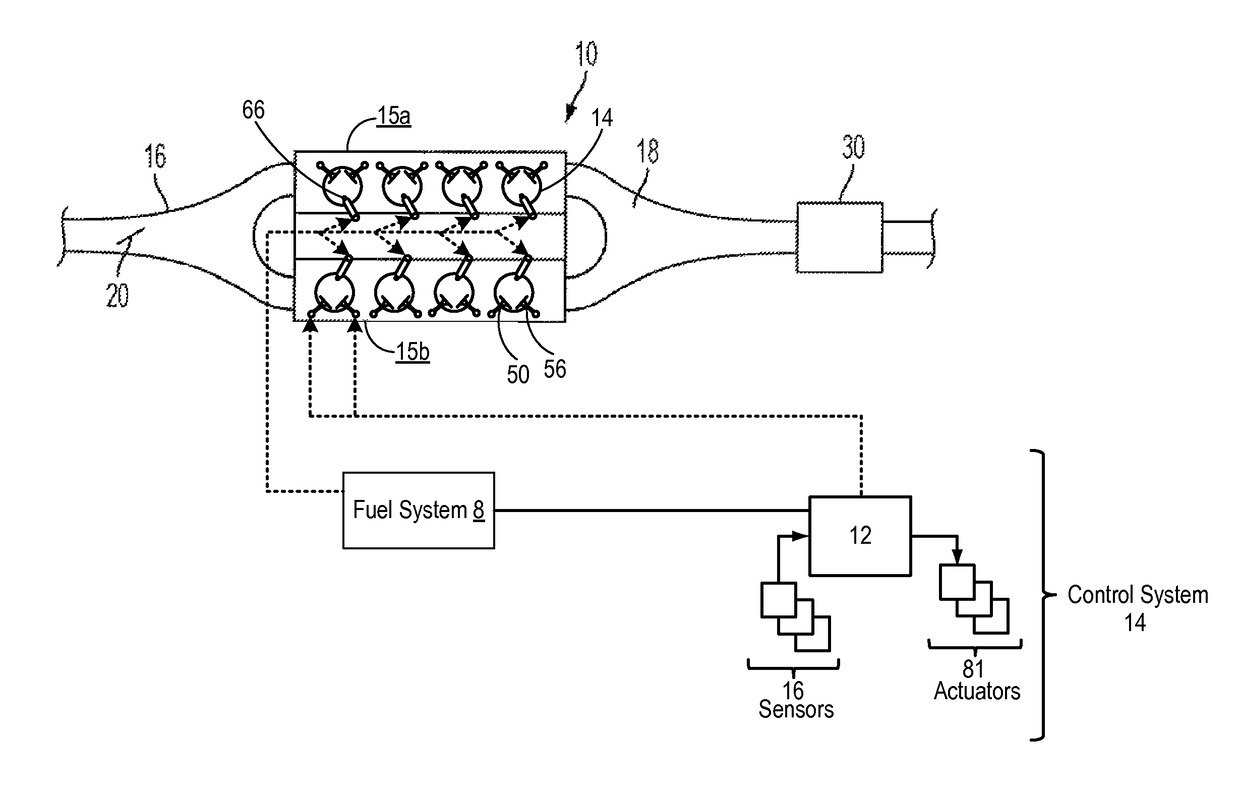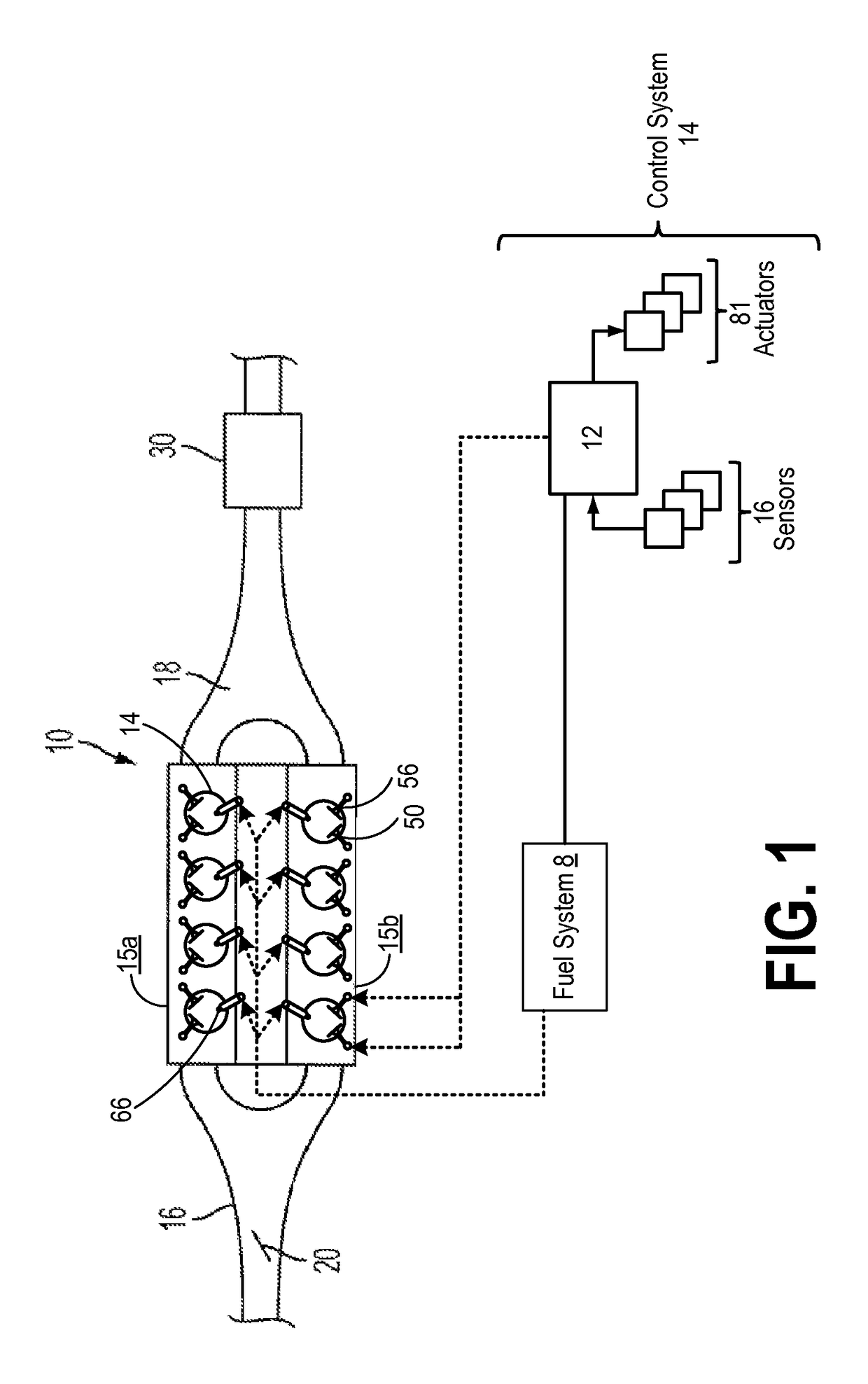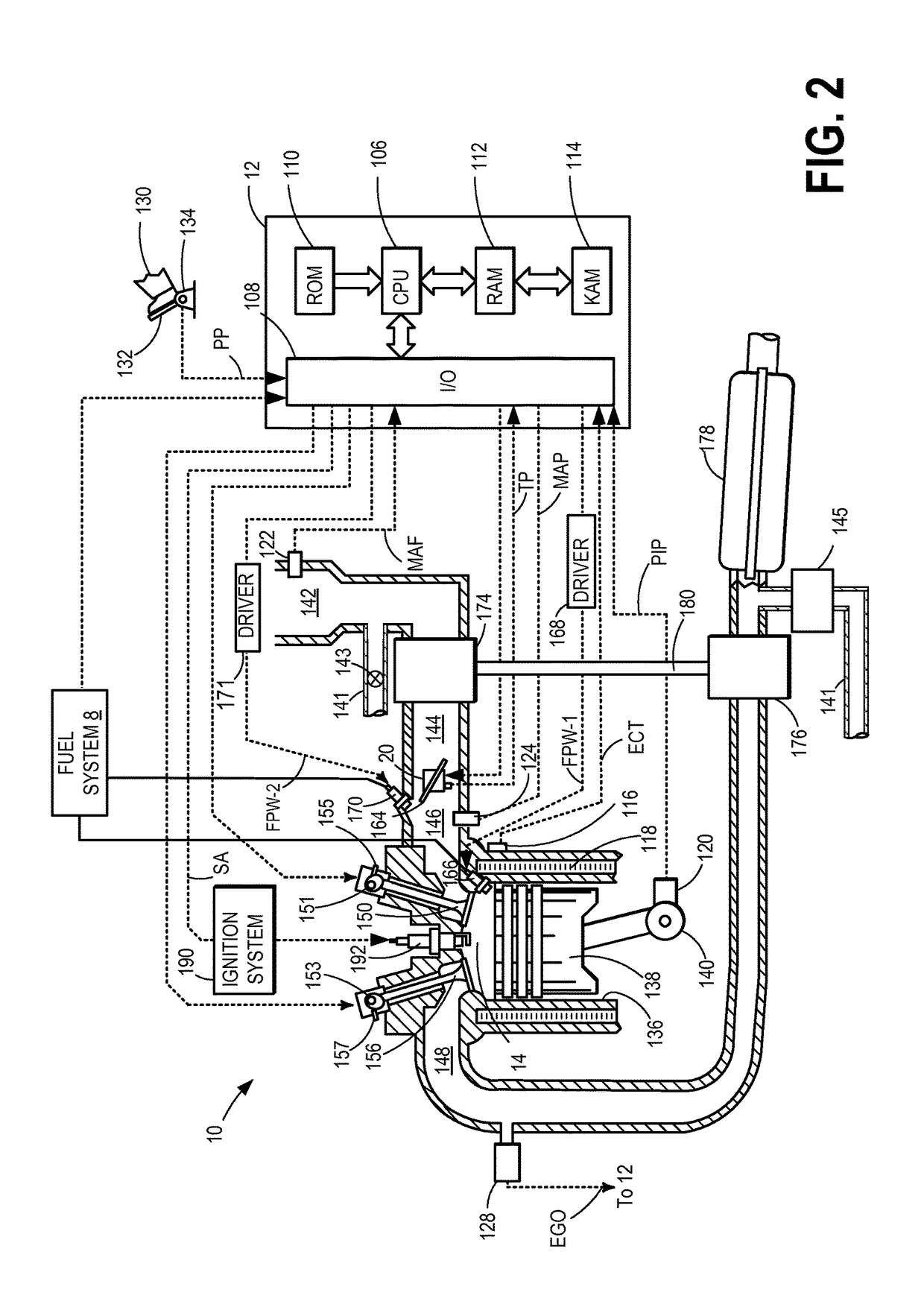Method and system for exhaust catalyst warming
a technology of catalyst and exhaust, applied in the direction of electric control, ignition automatic control, machines/engines, etc., can solve the problems of limiting the amount of spark retard and air flow that can be obtained, engine combustion may become unstable, and undesirable nvh effects
- Summary
- Abstract
- Description
- Claims
- Application Information
AI Technical Summary
Benefits of technology
Problems solved by technology
Method used
Image
Examples
Embodiment Construction
[0016]Operating an engine with skip fire, where at least one cylinder of the engine is skipped and not fired during each engine cycle, may improve fuel economy and emissions during certain operating conditions, such as low engine load. An engine configured to operate with skip fire is illustrated in FIGS. 1-2, and FIGS. 3-4 illustrate cylinder firing plots for the engine of FIGS. 1-2 in a non-skip fire mode (FIG. 3) and in a skip fire mode (FIG. 4). An engine controller may be configured to perform a control routine, such as the example routine of FIG. 5, to adjust an engine speed while operating the engine in a skip-fire mode during an engine cold-start. This allows the heat flux to the engine to be increased, expediting exhaust catalyst activation. An example operation is shown with reference to FIG. 6.
[0017]FIG. 1 shows an example engine 10 having a first bank 15a and a second bank 15b . In the depicted example, engine 10 is a V8 engine with the first and second banks each having...
PUM
 Login to View More
Login to View More Abstract
Description
Claims
Application Information
 Login to View More
Login to View More - R&D
- Intellectual Property
- Life Sciences
- Materials
- Tech Scout
- Unparalleled Data Quality
- Higher Quality Content
- 60% Fewer Hallucinations
Browse by: Latest US Patents, China's latest patents, Technical Efficacy Thesaurus, Application Domain, Technology Topic, Popular Technical Reports.
© 2025 PatSnap. All rights reserved.Legal|Privacy policy|Modern Slavery Act Transparency Statement|Sitemap|About US| Contact US: help@patsnap.com



